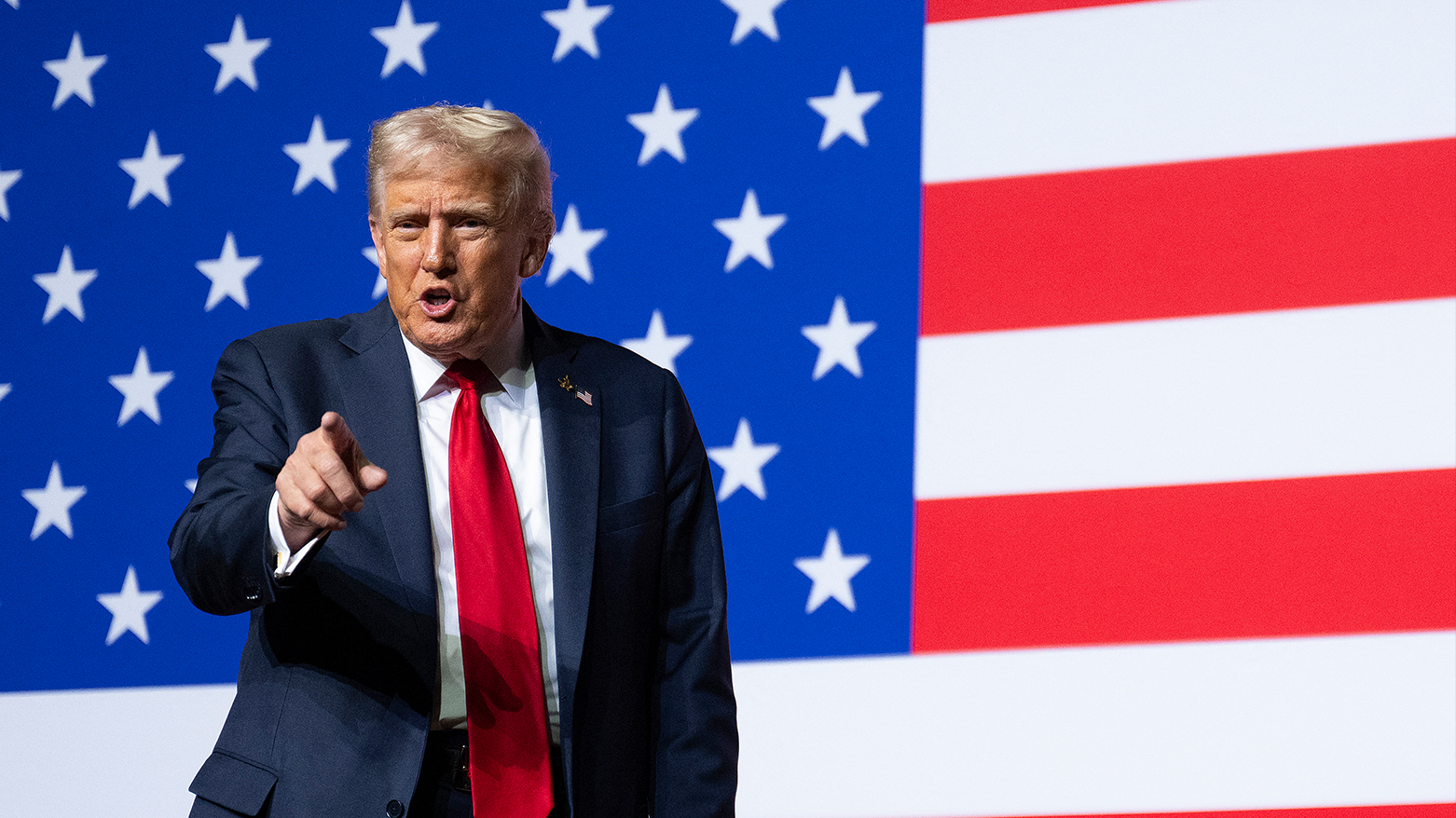Trump gives Hamas until 2200 GMT Sunday to agree to Gaza deal
Trump issued a Sunday 6 PM deadline for Hamas to accept his Gaza peace deal, warning "all hell" would break out if they refuse. The proposal includes ceasefire, hostage release, and Hamas disarmament, with Trump leading a transitional authority.

ERBIL (Kurdistan24) – United States President Donald Trump has given Hamas until 2200 GMT on Sunday to accept his 20-point peace initiative for Gaza, warning that if the Palestinian militant group refuses, it will face consequences of unprecedented severity.
“If this LAST CHANCE agreement is not reached, all HELL, like no one has ever seen before, will break out against Hamas,” Trump declared on his Truth Social platform on Friday. The deadline, falling at 1:00 a.m. Monday in Gaza, comes after a Hamas official told AFP that the group needed more time to study the proposal, which aims to end nearly two years of devastating war in the besieged territory.
The plan, drafted under U.S. auspices and supported by Israeli Prime Minister Benjamin Netanyahu, outlines an immediate ceasefire, the release of hostages within 72 hours, Hamas’s disarmament, and a phased Israeli withdrawal from Gaza. Following these measures, a transitional post-war authority would be established under Trump’s leadership.
“Hamas is still continuing consultations regarding Trump’s plan... and has informed mediators that the consultations are ongoing and need some time,” a Hamas official told AFP on condition of anonymity.
Earlier this week, Trump had warned Hamas it had “three or four days” to reach a decision, a timeline that expires with Sunday’s ultimatum. The plan has been welcomed by world powers, including Arab and Muslim-majority states, but remains under internal debate within Hamas.
Mohammad Nazzal, a member of the Hamas political bureau, said Friday that the “plan has points of concern, and we will announce our position on it soon.”
While political negotiations continued, Gaza endured another day of heavy bombardment. On Friday, Gaza’s civil defence agency, operating under Hamas authority, reported that Israeli strikes killed at least 11 people, including eight in Gaza City. The rescue force also described relentless artillery shelling and aerial bombardments across the enclave.
AFP noted that restrictions on reporting and limited access to Gaza prevent independent verification of the casualty figures. The Israeli military has yet to issue a comment.
Israel’s military offensive has targeted Gaza’s largest urban center, forcing hundreds of thousands of civilians to flee. The United Nations reiterated Friday that there was “no safe place” in Gaza, dismissing Israel’s designated zones in the south as “places of death.” UNICEF spokesperson James Elder, speaking from Gaza, described the idea of safety zones as “farcical.”
Amnesty International condemned what it called a “catastrophic wave of mass displacement,” emphasizing that hundreds of thousands of Palestinians were being driven into “overcrowded enclaves in the south... that lack access to clean water, food, medical care, shelter and life-sustaining infrastructure.”
The deteriorating humanitarian crisis coincided with global protests, sparked by Israel’s interception of the Global Sumud Flotilla. Organizers said the flotilla’s final boat had been stopped, while Israel confirmed the deportation of four Italian activists.
Internal debates within Hamas over Trump’s plan have intensified. According to a Palestinian source close to the group’s leadership, Hamas has sought amendments to specific clauses, especially concerning disarmament. Leaders are also demanding “international guarantees” for a complete Israeli withdrawal and assurances against assassination attempts inside or outside Gaza.
Another source familiar with the negotiations told AFP that Hamas’s leadership is divided into two camps. One faction supports unconditional approval, prioritizing a ceasefire guaranteed by Trump and overseen by international mediators. The other faction has “serious reservations regarding key clauses” and advocates conditional approval with clarifications to reflect Hamas’s and other resistance factions’ demands.
Analysts warn that these divisions complicate decision-making. Hugh Lovatt, a senior policy fellow at the European Council on Foreign Relations, noted that convincing Hamas’s Doha-based leadership alone would not suffice. “Ultimately, it’s not just about convincing Hamas leadership in Doha, but also the leadership in Gaza, as well as Hamas members and fighters in Gaza,” he said. “Additionally, Hamas must then be able to convince other factions in Gaza.”
The conflict, now nearing its second anniversary, began with Hamas’s October 7, 2023 attack on Israel that killed 1,219 people, mostly civilians, according to Israeli figures. Israel’s retaliatory offensive has since killed at least 66,288 Palestinians, according to health ministry figures in the Hamas-run territory that the United Nations continues to cite as reliable. The data does not distinguish between civilians and combatants but indicates that women and children make up more than half of the casualties.
As Trump’s Sunday deadline looms, the future of Gaza hangs on whether Hamas accepts the plan in its current form, secures amendments, or risks the threatened escalation described by the U.S. president as “all hell like no one has ever seen before.”
